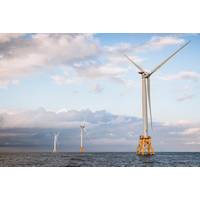
Underwater Power Grids Could Revolutionize How the US East Coast Gets Its Electricity
the benefits and who bears the costs matters. For example, more expensive power generators could earn less, and some communities feel threatened by offshore development.Third, greater coordination will be needed among everyone involved to dispatch power to and from the regional grids. The Federal Energy Regulatory Commission’s recent Order 1920, requiring power providers to plan for future needs, may serve as a blueprint, but it does not apply to interregional projects, such as an offshore transmission backbone connecting over a dozen states across three regions.The U.S. reached an important milestone
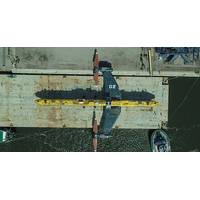
Utility Serving San Juan Islands Proposes to Harness Tidal Power
and federal interagency engagement with the U.S. Army Corps of Engineers, the National Marine Fisheries Service, the U.S. Fish and Wildlife Service, the Washington Department of Fish and Wildlife, the Washington Department of Ecology, the Washington Department of Natural Resources and the Federal Energy Regulatory Commission.Once the necessary environmental studies have been completed, permitting the deployment of this system is expected to take approximately 24 months, according to OPALCO.Large-scale installationIn partnership with Orbital Marine Energy, OPALCO seeks to bring to local waters an industrial
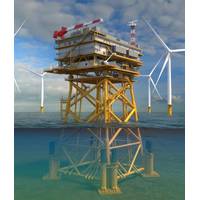
Motus to Supply Platform Main Crane for Empire Wind 1 OSS
excited to be part of this development,” said Kjell Hollen, CEO of Motus Technology.To remind, The Empire 1 project was selected as a provisional winner in New York’s fourth offshore wind solicitation (NY4) on February 29, 2024.In March, Equinor received an approval from the Federal Energy Regulatory Commission (FERC) to connect the Empire Wind 1 offshore wind project directly into the New York City’s transmission system.New York Awards Equinor and Orsted New Offshore Wind ContractsNew York’s Empire Wind 1 Gets Federal Green Light for Grid Connectio
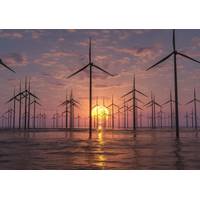
The Curious Case of the 1,200 MW Transmission Size “Limit” in New England
hourly calculation involving a control-to-control room check. The 1,200 MW value does not appear in the 1991 agreement, but is observed by the three grid operators as the lower limit under which system operators will redispatch generation to maintain. The 1991 agreement was filed with the Federal Energy Regulatory Commission (FERC) in Docket No. ER07-231-000 on an “informational” basis in November of 2006 because it did not contain “rates, terms, or conditions” under the Federal Power Act (FPA). FERC rejected that informational characterization in its January 12, 2007 order

BOEM Issues Lease for Wave Energy Research Project off Oregon
and a professor in Oregon State's College of Earth, Ocean, and Atmospheric Sciences. “We’re excited for the opportunity to finalize this stage of the project and move a major step closer to construction.”Lease issuance by BOEM is a prerequisite for a license from the Federal Energy Regulatory Commission (FERC), which is the federal agency that would approve project construction and operations. Oregon State officials have completed the FERC application process and are hopeful the license will be issued soon. Current timelines suggest construction could begin this summer, and the facility
Bourne Tidal Test Site Receives Preliminary Permit from FERC
The Bourne Tidal Test Site is now a bit closer to reality. The Marine Renewable Energy Collaborative (MRECo) was notified by the Federal Energy Regulatory Commission (FERC) that it has been approved for a preliminary permit to set up a test site for tidal energy in the Cape Cod Canal. “This is the first and very important step to gaining all the regulatory permits required for the test site, which will be the first in the United States,” said MRECo Director, John Miller. “MRECo was given preliminary permission to work in an area that covers more than just the spot
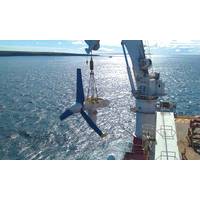
Riding the Waves and Tides to a Cleaner Energy Future
is to help improve the performance and reduce the cost of MHK technologies. (http://energy.gov/eere/articles/energy-department-awards-74-million-develop-advanced-components-wave-and-tidal-energy.) If a MHK project is located in state waters, permitting is provided by the Federal Energy Regulatory Commission (FERC). FERC’s authority to regulate MHK projects in state waters is derived from Part I of the Federal Power Act (16 U.S.C. 791a et seq.). A user-friendly guide to FERC’s licensing procedures is available at: www.ferc.gov/industries/hydropower/gen-info/licensi
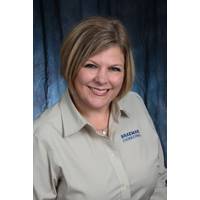
Braemar Named Engineers for Brownsville LNG Project
of LNG, with the first shipments planned for export in 2019. Texas LNG is currently working with its strategic and engineering partner, Samsung Engineering, progressing the FEED (Front End Engineering Design) phase of the project. Texas LNG has recently secured funding for the Federal Energy Regulatory Commission (FERC) application process from a New York based investment fund. The development strategy for the project aims to minimize the environmental impact of current gas flaring, and provide a net positive environmental and economic benefit to the region. Sheila McClain, Executive
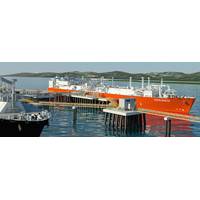
FERC Issues DEIS for Gasport off Puerto Rico
Excelerate Energy, in cooperation with the Puerto Rico Electric Power Authority (PREPA), has received the Draft Environmental Impact Statement (DEIS) from the Federal Energy Regulatory Commission (FERC) for its Aguirre Offshore Gasport Project (AOGP) located offshore Puerto Rico. The FERC staff concludes in its statement that the construction and operation of the Project would result in limited adverse environmental impacts that would mostly occur only during construction. Moreover, the statement confirms the inherent benefits of the project; including, the diversification of Puerto Rico’s


 February 2025
February 2025





